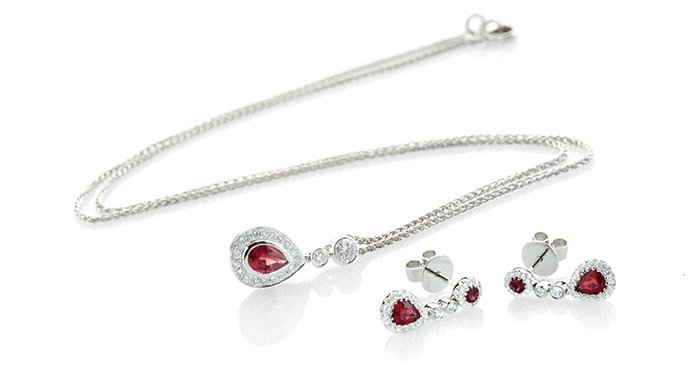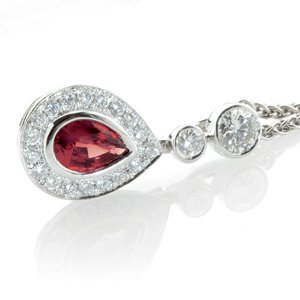Rubies are red, their value: well that depends on quite a lot
Rubies are red, their value: well that depends on quite a lot

Some of the most striking jewellery pieces synonymous with romance are set with sumptuous red Rubies.
The birthstone of July, the Ruby has long been associated with desire, devotion and romance, hence making the perfect engagement rings, as well as rings gifted to impress. Hollywood stars and some Royalty have given Ruby jewellery to their partners; Elizabeth Taylor famously received a stunning Ruby ring set with Diamonds as a Christmas gift from Richard Burton. The value of fine quality Rubies has been rising consistently.
 They are found in their natural state in only a few places worldwide including Thailand, and Myanmar (formerly known as Burma), where Burmese Rubies are, by reputation, some of the finest in the world. Supplies of fine Burmese Rubies are now almost entirely exhausted, and this finite supply is forcing their prices, in particular, skyward. More recently finds in Africa are showing high grade stones too.
They are found in their natural state in only a few places worldwide including Thailand, and Myanmar (formerly known as Burma), where Burmese Rubies are, by reputation, some of the finest in the world. Supplies of fine Burmese Rubies are now almost entirely exhausted, and this finite supply is forcing their prices, in particular, skyward. More recently finds in Africa are showing high grade stones too.
With all precious gemstones there are the finest examples, whilst there are also stones that masquerade as being better in quality than they actually are, or have been treated in such a way so as to obscure natural blemishes. To ensure that your romantic gesture hits the right note here are some attributes which you can look out for when making a considered purchase:-
Colour: This is the most important factor in determining value for Rubies, for a ‘true’ Ruby should appear pure red in colour, likened in the past to ‘Pigeon’s blood’ – vibrant and erring towards a very slight purplish colour, which should denote a top quality stone.
Size: The per-carat price of a Ruby will also increase dramatically as its size increases, especially for better-quality stones, although naturally formed Rubies over one carat are very rare.
Clarity: While inclusion-free Rubies are practically non-existent, a lot of the value is attributable as to how visible, or rather invisible, these naturally occurring tiny fractures are. Inclusions may affect the transparency and brilliance of the stone, thus reducing the value in certain cases.
Cut: Rubies are commonly cut and fashioned into oval and cushion shapes; other round, triangular, Emerald-cut, pear, and marquise cut Rubies are available, whilst these shapes are rare in larger sizes and in higher quality specimens. Their crowns tend to possess facets which are kite-shaped with triangular facets, or with concentric rows of rectangular and square facets.
Certification: If the stone is natural, with a reputable laboratory certificate to state that there is no evidence of heat treatment or that it has a provenance (e.g. Burmese) then it can carry a higher value as such stones are becoming increasingly rare.
There are other red gemstones including Garnet, which usually exhibit hints of orange or other earthy tones, whilst some Sapphires are found in a range of hues including red-orange or pink-red. Sapphires are very similar in composition to Rubies; both are colour forms of Corundum, which is a rock forming mineral that can be found in a wide range of colours naturally, most of which are usually opaque and dull in relation to the much rarer colour forms.
If you already own a piece of jewellery which contains Rubies and you would like it valued professionally for insurance purposes, do book an appointment where we can advise you and facilitate an independent NAJ valuation, which will mean that your jewellery may be insured sufficiently, should the unthinkable happen.
You can view some of my jewellery creations which are set with fine Rubies on our website and by appointment in Oakham.

